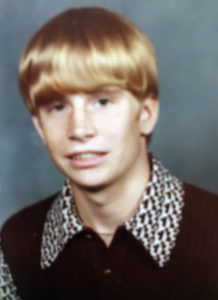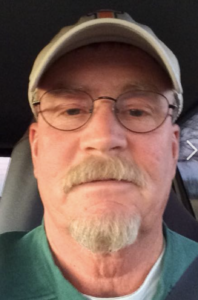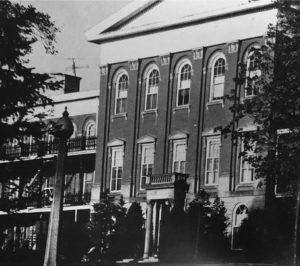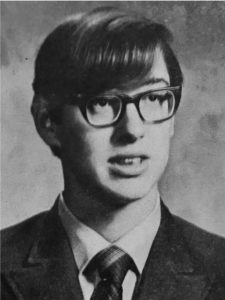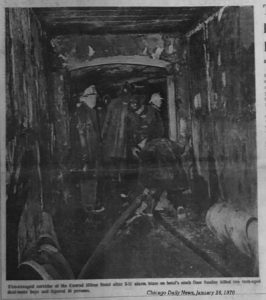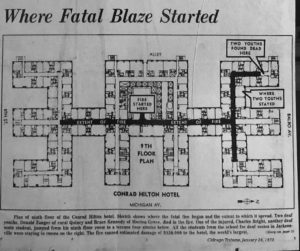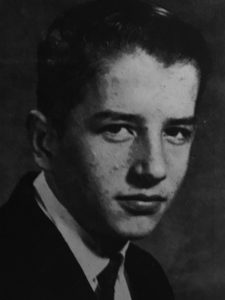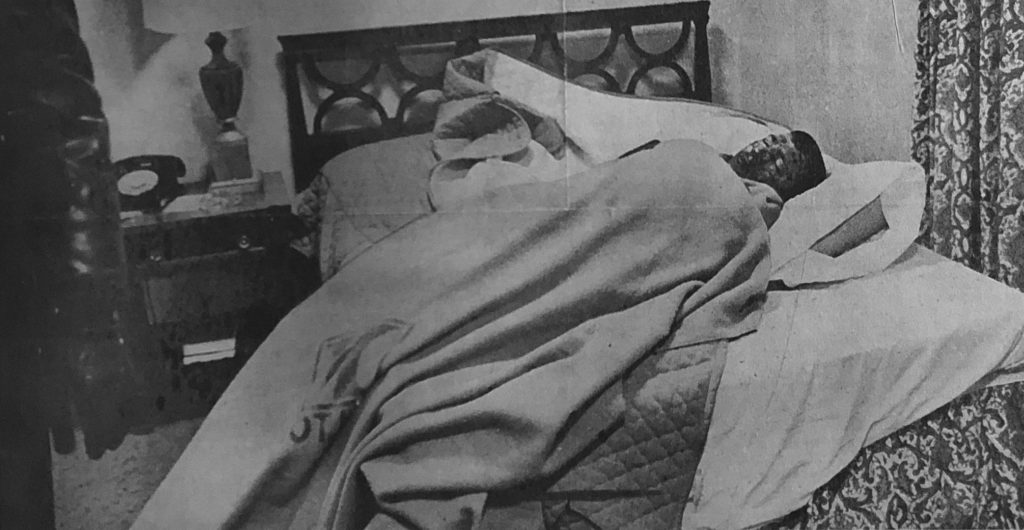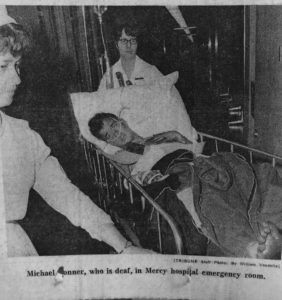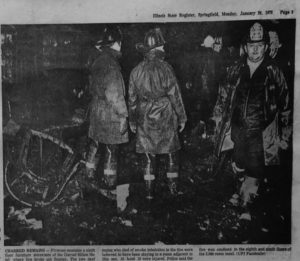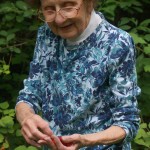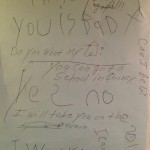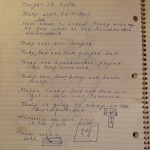Chapter One in Deaf Eyes on Interpreting (2018) edited by Thomas K. Holcomb and David H. Smith.
View the ASL summary of this article here.
When my two-year-old son broke his leg, I took him along with my one-year-old to the orthopedic doctor for a follow-up. At the time, I lived in a small town that had a deaf school. What this meant was there were hundreds of Deaf residents and practically everyone in town knew how to sign or at least how to work with interpreters.
After an unusually extended wait time, I had the certified and certainly very qualified interpreter, who I had worked with in the past, accompany me to ask the receptionist about the delay. The receptionist, typing on her computer, said that the doctor’s schedule was backed up. I asked if we could see the doctor sooner rather than later since my children were restless and hungry. On top of that, my son, in a body cast from chest to toe, needed his medicine at home. She refused, so I asked to speak with the doctor or nurse. She again refused.
Throughout this entire interaction, she never once looked at me. Frustrated, I said, “Could you please look at me?” She turned her head and looked at the interpreter, who quickly pointed at me. I then asked, “Could you please offer a resolution? We’ve been here an hour.” At that very moment, my youngest began crying. The receptionist, sighing, called a nurse, who was far more courteous and apologetic. I asked to file a complaint about the receptionist’s behavior, and the nurse nodded, saying she’d get back to me. The interpreter and I returned to our seats where my son was.
A few minutes later, the receptionist called the interpreter over for a phone call. The interpreter answered the phone, beckoned me over, and said it was the office manager. She interpreted as the office manager began asking questions all the while the receptionist was looking at me with dagger eyes. I asked the office manager if I could email her, since the receptionist was listening in. The office manager agreed, and we hung up. Walking to my seat, I looked back and saw the interpreter casually cover her mouth as she whispered to the receptionist. Once the interpreter returned to her seat directly across from me, I asked what she had said to the receptionist.
“Nothing, why?” the interpreter said.
“I saw you whisper to her, what did you say?” I asked.
She again said, “Nothing.”
I was puzzled. “No, I saw you whisper. What was it about?”
She relented. “Uh, she began apologizing to me for her behavior, and said she didn’t mean to talk to you like that. I told her it was okay.”
I was surprised. “But it isn’t okay how she treated me. Why didn’t you tell her to apologize directly to me?” As realization of what she had done dawned over her face, we were called into the examination room and the appointment was over fairly quickly.
Such a simple act of trying to mediate a situation—when the interpreter really didn’t have the right to—became a disempowering experience for me. Had the interpreter been in my shoes, would she have told the receptionist this delay and behavior was okay? I don’t know, but this was the start of my extensive work on understanding disempowerment and how we have become complacent with its role in our lives. And there’s been one crucial thread throughout the hundreds of stories shared with me about disempowerment: the importance of storytelling, or autoethnography. (1)
Autoethnography and the Importance of Storytelling
Rachel Freed said, “We tell our stories to transform ourselves; to learn about our history and tell our experiences to transcend them; to use our stories to make a difference in our world; to broaden our perspective to see further than normal; to act beyond a story that may have imprisoned or enslaved us; to live more of our spiritual and earthly potential.”
This is exactly why it’s so important for Deaf people to share stories with each other and with others such as interpreters: to learn about the never-ending history of oppression, audism, and disempowerment. Yet, interpreter education often consists of academic, on-the-job, and formal, research-based learning about Deaf culture, linguistic aspects of American Sign Language (ASL), ethics, test preparation, and Deaf history—but very rarely does it involve Deaf people telling stories about life on a day-to-day basis. The few stories that are shared often come in the form of mass-produced videos, well-orchestrated interviews, and/or discussion panels focused on generic “What is it like to be Deaf?” discussions, each broad enough to cover the entire community, but not quite capture the intricate experience of being Deaf. In “Being Scheherazade: The Importance of Storytelling in Academic Writing,” authors Pollock and Bono stated, “One impediment to effective storytelling is the lack of a human face—actors acting and the human imbuing all of our experiences. All too often, academic writers remove the human elements from their storytelling in an effort to sound ‘scholarly.’ They engage in arid, context-free theorizing, of interest only to the most ardent specialists in their domains.”(2)
As Pollock and Bono pointed out, it is the day-to-day stories that are so crucial to understanding the challenges Deaf people face, particularly with interpreters — that is, the stories they share in the privacy of their homes and through vlogs. Deaf people’s frustrations are often discarded by hearing people who say, “My gosh, I’d never do that, how horrible!” and then perform this very same disempowering behavior minutes later.
Many interpreter education courses and workshops pertain to stereotypes or “what if” situations, but very few actually focus on the countless examples of disempowerment, and the consequences, simply because the disempowerment is so deeply embedded into their mindset of “it’s just how things are” — much like the example shared at the start of this chapter. Another factor is that many programs emphasize the positive aspects of the field, rather than the nitty-gritty of what Deaf people experience at the hands of interpreters. On top of that is the severe lack of data, resources, and education available for Deaf people. Most of the money for training and data goes to hearing-led interpreting projects, programs, and studies geared towards hearing interpreters. Even if such projects, programs, and studies involve Deaf people at lower levels, they are still hearing-led and therefore hearing-influenced at the final decision-making level.
Therefore, this anecdotal discussion and the subsequent chapters center on personal narratives, rather than statistics or research-driven evidence. “One of the main advantages of personal narratives is that they give us access into learners’ private worlds and provide rich data.” (3) The autoethnographic approach in this book, with each author contributing a personal experience, is “a useful qualitative research method used to analyse people’s lives, a tool that Ellis and Bochner define as ‘. . . an autobiographical genre of writing that displays multiple layers of consciousness, connecting the personal to the cultural.’ There are different uses of the term and it varies according to the relations between the researcher’s personal experience and the phenomenon under investigation. Autoethnography can range from research about personal experiences of a research process to parallel exploration of the researcher’s and the participants’ experiences and about the experience of the researcher while conducting a specific piece of research.”(4)
Researcher and popular speaker Brene Brown said, “Vulnerability is about sharing our feelings and experiences with people who have earned the right to hear them. Being vulnerable and open is mutual and an integral part of the trust-building process.” (5) Since I first spoke on disempowerment some years ago, hundreds of stories about disempowerment have been shared with me to the point where I have felt overwhelmed, even drained, at the gravity of their experiences. So many Deaf people have told me of their discomfort in sharing their experiences with hearing people, preferring Deaf people like me who have been in the trenches of disempowerment. By sharing my vulnerability through my stories both in my presentations and my blog, Deaf people and quite a few hearing interpreters have come to trust that I understand and validate what they share.
It is my hope that by having Deaf people share their disempowerment stories along through various channels such as this book, articles and blogs, workshops, social media, and in autoethnographic research, we can all recognize that sharing stories does not always imply anger, bitterness, or vengeance. Rather, it is a profound way to share experiences that are rarely told because of fear of so many things: denial, judgment, and worst of all, dismissal of their experiences. Deaf people also often hesitate to share such stories with outsiders for fear of being called militant, bothersome, complainers, or any other number of labels. Let us not forget that many have grown up being indoctrinated with feedback that they’re expecting too much when they ask for equal treatment, that it’s not important to know what was just spoken, or that they’re not as valued as others. Talking about real-life instances of disempowerment, ordinary or extraordinary, can help challenge the status quo, and create greater opportunities for increased societal equity among Deaf people.
Disempowerment and Hearing Privilege
The word disempowerment has quite a simple definition for such a powerful concept: to take away power. Disempowerment takes place on a daily basis for most deaf people, and runs the gamut of seemingly meaningless incidents to life-changing situations. When we think of disempowerment among Deaf people, we usually think of things like being denied interpreters, watching films or TV that aren’t captioned, being told not to sign, or seeing hearing actors in roles portraying Deaf people. Yet there are smaller, everyday acts (microaggressions, if you will) that hold just as much capacity, if not more, to disempower Deaf people. And these everyday acts are often performed by perhaps some of the most powerful allies of the Deaf community: interpreters.
A crucial element to understand before delving into disempowerment is hearing privilege. Much like “white privilege,” hearing privilege is an emerging topic. Tiffany Tuccoli, in her master’s thesis, described it as “…advantages or entitlements that are enjoyed by people who can hear which are denied to those who are Deaf. These advantages give hearing people power and authority to decide how society should be designed” (emphasis added). (6)
This power and authority of designing society is what is often taken away from Deaf people as we go about our daily lives. Worse yet, we often aren’t sure if it’s because we’re Deaf or not. This is often found among other minorities as well:
To use a non-interpreting example, Oprah Winfrey was denied access to a store in Paris. She felt that she had been discriminated against because she was black. The store claimed that they were setting up for a private party and couldn’t let her in. Tim Wise suggests that the reason doesn’t matter. What is more significant is that “Oprah Winfrey, with all her money, all her power, and all her influence, still had to wonder, even if only for a moment, whether her race had trumped all that in the eyes of another person” (Wise, 2008, p. 72). Deaf people frequently have similar thoughts and experiences when encountering systems and institutions that favor the ability to hear, or hearing privilege. No matter how competent or powerful those individuals are, the risk of encountering doubt and insecurity is simply a part of living in a hearing-dominated society. (7)
Another example of hearing privilege is illustrated in a video featuring Roger Claussen (8), who led a National Association of the Deaf committee disseminating a survey about open-captioned films instead of having to use devices such as rearview captioning. In his 10-minute video, Claussen shared a humorous, yet realistic, narrative about the annoying factors hearing people never have to deal with or even think about. He talks about how, with rearview captioning, Deaf people are required to leave their driver’s licenses if they want to use the captioning equipment, struggle with holding refreshments because the device installs in the refreshment holder leaving no place to put drinks, fiddle constantly with placement of the device for optimal viewing, have to carry the device to and from the bathroom, and have to stay well after the movie’s end just to retrieve their driver’s licenses.
Hearing privilege is natural for most people, and while it is often automatically integrated into a hearing person’s life, it needs to first be recognized and understood before addressing disempowerment. Yet even this seems to be fraught with resistance. In 2016, a social media campaign took place focusing on “#hearingprivilege,” in which people posted their experiences and how they were affected by hearing privilege. Some expressed discomfort at seeing hearing people posting their own experiences with #hearingprivilege, commenting that this was yet another example of hearing people intruding upon Deaf people’s safe space and not necessarily honoring this space or their experiences. What was more striking was that there were others who felt this #hearingprivilege campaign was simply another way for Deaf people to complain and even attack hearing people. This goes back to the aforementioned act of dismissing Deaf people’s experiences, and the vulnerability they faced in posting their experiences, as Brown stated.
For another example of disempowerment, let’s go back to when I was 13 years old. I went to a public high school that had eighty deaf students and eight full-time interpreters. I took a theater course with three other deaf students and maybe twenty-five hearing students; it was interpreted by one of the better interpreters. She criticized my signing every single day, saying that I signed “too ASL.” She even went as far as voicing gibberish if she didn’t understand me — often causing the hearing students and teacher to break out in laughter.
For an extremely insecure teenager struggling with her identity, having attention called to her like this was beyond horrifying. This was humiliation, pure and simple. The interpreter, to compensate for her lack of fluency, purposefully disempowered me. Interpreters should be accountable for their lack of fluency and not put this on the Deaf person’s shoulders. Unfortunately, this is an all-too-common scenario among mainstreamed students. As a Deaf person from a Deaf family surrounded by Deaf role models, I still didn’t know what to do. One morning, I refused to go to school, dreading the thought of dealing with such humiliation. When I explained what I had to endure every morning in what was the first class of the day for me, my mother immediately contacted the guidance counselor, who was a CODA and also the interpreter coordinator. The counselor brought the interpreter in for a meeting with my mother and me. He scolded the interpreter for what she had done, saying she had no right to demean my language and that she needed to respect my language. That was one of the first times I had ever seen someone advocate for my native language to be left alone. While the interpreter did stop mocking me, her disempowering acts as a whole did not cease for any of the students and still affect me to this day.
To take away a deaf person’s power, whether intentionally or unintentionally, is unacceptable. One common feedback from hearing participants and readers is that the disempowerment examples I share — not all my experiences, but also other people’s experiences — shared are “extreme examples,” or that there must be reasons or more details I didn’t share. Unfortunately, they aren’t extreme; every single time I’ve shared an story, there is a chorus of, “I went through that, too!” from so many Deaf people. Simply because hearing people don’t necessarily encounter disempowerment or recognize the rawness of the experience, doesn’t mean the examples are extreme, far-fetched, or explainable.
Knowledge Imbalance
Many people, both Deaf and hearing, have appropriately lauded the interpreting profession, namely the Registry of Interpreters for the Deaf (RID), in raising its standards especially within the past few years. Yet there is one act of disempowerment throughout this progress that has been deeply, and easily, overlooked: the knowledge imbalance, creating a major disadvantage among Deaf people.
RID now requires its interpreters to have bachelor’s degrees, among other criteria; this is a fantastic requirement because it ensures that interpreters are educated even if not in interpreting. Yet this automatically places them in a more educated position than Deaf people who don’t have bachelor’s degrees. Add to that the fact that many Deaf people don’t have the same access to education as hearing people.
Interpreters, to receive certification, must also have the necessary (even if minimal) training in all the aspects involved with interpreting. Are Deaf people given interpreters with top-notch fluency in both languages? Frequently, the answer is no. This education and the lack of full ASL fluency create a major imbalance in knowledge and power. After all, do Deaf people have the same access to education as interpreters? No.
Are Deaf individuals generally trained to work with interpreters on advocating for interpreter quality, and on how the interpreting process ideally works? No, absolutely not. Is there any training provided to Deaf people in elementary school through adulthood on how to work with interpreters in various settings, or on self-advocacy? The answer is no once again; any existent curriculum is typically very limited in its availability. Consider that many interpreters receive formal, professional training in everything from ASL to ethics to business practices. Interpreters are also tested on their knowledge and skills, and then maybe certified.
Meanwhile, Deaf people have had to constantly educate each other on a grassroots level on how to deal with interpreting dilemmas because there is simply no formal training for Deaf people of all ages in working with interpreters. It’s a catch-22 situation for most Deaf people: they can’t get access to the very education they should have for the employment they should gain. Yet, through educational programs, interpreters are given the knowledge that Deaf people so greatly need and deserve. When Deaf people do not receive this same knowledge about interpreting, linguistics, their rights, and everything else under the sun, this has deep-seated repercussions.
Like it or not, interpreters have an incredible amount of jurisdiction over Deaf people’s access to people, medical appointments, education, employment, phone calls, and pretty much everything else. This isn’t necessarily bad, as long as they use this power appropriately and without malice. But this so-called jurisdiction can create even further potential for conflict and division. Making things even harder is how this power imbalance can become magnified in small towns where interpreters might, by default, rule the roost because they know everyone, Deaf or hearing, in town. This has happened time after time, where Deaf people lose jobs, are rejected for jobs, are perceived as unintelligent, and so much more, all because they had conflicts with interpreters.
This, then, leads to incidents as shared by so many Deaf people, demonstrating how interpreters are often among the most common disempowerers, even if unintentionally. Keep in mind that there certainly are many hearing people who take power away from Deaf people deliberately, and may believe they have the right to do this and express shock and disbelief when Deaf people react negatively.
Consider medical appointments as an example. Often, interpreters are trained and/or instructed to wait in the hallway whenever the nurse or doctor leaves instead of staying in the room with the Deaf patient. From the interpreter’s perspective, this is necessary given the potential for ethical dilemmas to arise. Suppose the Deaf patient says something to the interpreter that is medically relevant, but doesn’t share this information with the doctor. Is the interpreter bound to tell the doctor? Yet, is it really fair to keep the patient isolated in a room where there’s no visual access to all the sounds and conversations that a hearing patient could overhear? Many Deaf people say no.
Anita Buel, a certified Deaf community health worker (DCHW) in Minnesota, has an ongoing frustration (personal communication). CHWs are certified, trained advocates who accompany patients in their own communities (in this case, the Deaf community) and provide advocacy, information, and clarification for patients who may feel overwhelmed by medical jargon, procedures, and the overall health system. DCHWs, however, are not certified deaf interpreters; they have as much of a need for interpreters as the Deaf patients. Buel said she gets frustrated when she knows interpreters are in the hallway waiting and then enter the room already deep in conversation with the doctor or nurse. This, to her, shows that the patient already is at a disadvantage because interpreters often build relationships with medical professionals and therefore aren’t always perceived as neutral parties or allies. Interpreters, by doing this, also have a rapport established with the medical staff that Deaf patients themselves often want to have.
This is also true for many other settings, such as courtrooms, where interpreters often are on a first-name basis with the judges, bailiffs, stenographers, and other individuals. Perception can have a major impact, and when a Deaf person sees that an interpreter has an already-established relationship with someone in a setting, it can create a power imbalance along with all the other challenges already in place.
So what’s the solution to this imbalance? There must be some kind of education in place for Deaf people, starting at early ages in schools. Education, in the form of classroom lessons and children’s workshops, could include how to work with interpreters as well as knowledge of rights to communication access (such as interpreters), of the interpreting process, of the opportunities to work with interpreters, and of the other aspects involved in working with interpreters.
There are continuously multimillion-dollar grants provided for interpreting projects, expansion of interpreter programs, increasing people of color and diversity in the interpreting field, curriculum development, and much more (and of course, the majority of such funded programs is hearing-led). Yet very little, if any, of that money is devoted to educating Deaf people — especially young children who don’t have deaf family members — on how to work with interpreters, on knowing their rights, and how to act if their rights have been obstructed in any way. Numerous possible ways can make this happen, such as having curriculum in place at Deaf schools, having interpreter preparation programs teach students how to arrange such a training with Deaf community leaders, and so on. The best way to accomplish this would be to work together as allies.
Creating Alliances
Interpreters have a very delicate line to walk on the job: they have to figure out how to mediate culture, conflicts, personalities, and so many other components all at the same time as interpreting. This is on top of constantly striving to respect the culture, language, and community values they work in. At best, this is a difficult task for many. Robert Lee said in his keynote at the RID Region III conference, “As a hearing, late-second-language learner of ASL, I have been invited into the lives of Deaf people, and I could just as easily be invited out. I have no intrinsic ‘right’ to be an interpreter, just as no outsider can claim the right to be a member of another culture, like people don’t have the right to be part of a Swahili [sic] or a Native American tribe.” [Note: Swahili is a language, not a tribe.] So how can “outsiders” be allies to a community they might not feel as if they’re allowed to be part of?
The best thing interpreters or hearing “outsiders” can do in their quest to respect the Deaf community while providing as much support as possible is to become cognizant of the many manifestations of their individual and collective power and privilege, and to know that Deaf people do not need saving. This can be rather difficult to embrace especially if one has entered the profession with the noblest of intentions. Deaf people also should understand their own roles in the relationship dynamics of disempowerment, and that interpreters are not always trying to claim ownership.
Transactional Relationships
Martin Buber, an eighteenth century philosopher, explored the concept of how people treat each other. He identified two types of relationships among people engaged in transactions: the I-It Relationship and the I-You Relationship. The I-It Relationship is what we create when we are in transactions with people whom we treat like objects—people who are simply there to serve us or complete a task. An example of this would be when interpreters look at consumers (Deaf or hearing) as simply opportunities to earn money and go home, and/or when Deaf people look at interpreters as simply there to serve their every whim (such as during video relay service calls). The other relationship, the I-You Relationship, is characterized by human connection and empathy. Over the years, the interpreter profession has moved from the helper model to the machine model to a continuum of sorts.
Brene Brown, who often cites Buber’s work, said, “When we treat people as objects, we dehumanize them. We do something really terrible to their souls and to our own. I am suggesting that we stop dehumanizing people and start looking them in the eye when we speak to them. If we don’t have the energy or time to do that, we should stay at home.”
Interpreters might also feel discouraged by what they perceive as constant negative opinions of the interpreting field (which are in actuality Deaf people’s lived experiences, not necessarily personally about interpreters—prompting the need to separate the interpreting work from themselves). Interpreters can either become complacent and maintain the status quo, or they can recall their original passion for the community. This book contains many new ideas, approaches, and models that can help interpreters get out of this complacency.
Understand, Analyze, and Act.
Brown said, “Trust is a product of vulnerability that grows over time and requires work, attention and full engagement.” (9) Yet how can we come together to prevent disempowerment, especially if someone is mistrustful of interpreters (or hearing people)? It’s easy to become discouraged, especially as an interpreting student or someone new in the field. As an outsider to the community, it quickly becomes overwhelming to realize that you, a hearing person, are entering a community so fraught with emotion, oppression, and triggers that were in place long before you were even born, and that you may perpetuate, knowingly or not, many of these triggers or stereotypes. This in itself is a daunting realization, but this awareness is the first wonderful step towards minimizing disempowerment.
Concluding Thoughts
To come together, we can first become aware of disempowerment of Deaf people in all of its many forms, especially situational, and how we contribute to this whether we’re Deaf or hearing. By actively resisting the almost automatic temptations of empathizing with hearing consumers, or even Deaf consumers, we can minimize, even eliminate, potential disempowerment. In addition to educating ourselves, it’s crucial that we recognize that disempowerment doesn’t always happen on purpose; it’s often by accident. Still, as renowned vlogger and blogger Franchesca “Chescaleigh” Ramsey says, “It’s not about intent. It’s about impact.”(10)
By refusing to engage in conscious disempowerment, deferring to the Deaf person whenever appropriate—especially when being asked about anything relating to the Deaf community, and allowing Deaf people to be primary decision-makers when appropriate, we can take steps towards ensuring that Deaf people retain their power. Interpreters can also serve as allies by supporting Deaf leadership, businesses, and agencies, and by operating under the assumption that a qualified Deaf person should be the automatic choice—and if this isn’t the case, be among the first to question why not.
It is also crucial to remember that if a deaf person expresses frustration about an experience of disempowerment, it doesn’t necessarily mean she or he is angry, divisive, or separatist. Nor does it mean that an interpreter is the worst person in the world. Rather, take a look at the situation, and figure out how, if at all, interpreters or hearing people might have contributed to the situation. More importantly, do not instinctively blame the frustration on the Deaf consumer or say that the Deaf person is pulling a person down or is working against someone. Instead, support each other, recognize (and validate) frustrations and vulnerability, and possess cultural competency. Listen to Deaf people’s stories, even if the emotions are raw and may sting for any number of reasons.
Even the seemingly small acts of disempowerment that deaf people have become so accustomed, almost immune to, have major impact on their everyday lives. It is crucial we all become fully educated as early in our lives as possible about acts of disempowerment, the interpreting process, legal rights, and how to deal with conflict or oppression. In addition to reducing disempowerment, this education and the tools it would put in place for the Deaf person would help reduce the ingrained frustration that often comes from encountering such disempowerment.
By understanding the gravity of each situation, small or large, through a storytelling or autoethnographic approach, we can then come to identify the steps leading up to that situation. By analyzing all the parties involved and their perceptions, and by figuring out what resources we have, we can then determine the best steps of action. By embracing what may seem to be difficult ideas, opinions, and stories from Deaf people, we can move forward together.
This mindset of understanding, analyzing, and acting is precisely what this book strives to achieve through personal stories, along with academic and real-life knowledge. By sharing stories and working together to develop solutions addressing the constant disempowerment that Deaf people experience, Deaf people and interpreters can stand on a more level playing field with equal knowledge, access, and power.
NOTES
- Rachael Freed, “The Importance of Telling Our Stories,” The Blog: Huffington Post, November 17, 2011. http://www.huffingtonpost.com/rachael-freed/legacy-telling-our-story_b_776195.html.
- Timothy G. Pollock and Joyce E. Bono, “Being Scheherazade: The Importance of Storytelling in Academic Writing,” Academy of Management Journal 56, no. 3 (June 2013): 629.
- Mariza Méndez, “Authoethnography as a Research Method: Advantages, Limitations and Criticisms,” Colombia Applied Linguist Journal 15, no. 2 (June-December 2013): 282.
- Méndez, “Autoethnography as a Research Method,” 280-81.
- Brene Brown, Daring Greatly: How the Courage to Be Vulnerable Transforms the Way We Live, Love, Parent, and Lead (New York City: Avery, 2012): 45.
- Tiffany Tuccoli, Exploring Hearing Privilege, (Master’s Thesis, Gallaudet University, 2008), 23.
- Doug Bowen-Bailey and Trudy Suggs, “To Lead or Not to Lead: Sharing Power in the Field of Interpreting,” RID Views, 31, no. 2 (Spring/Summer 2015): 28-29.
- Roger Claussen, “Movie Caption Survey,” YouTube video, 10:08, published March 18, 2013, https://www.youtube.com/watch?v=FQ1JHyP_jYE.
- Brene Brown, Daring Greatly: How the Courage to Be Vulnerable Transforms the Way We Live, Love, Parent, and Lead (New York City: Avery, 2012): 45.
- Franchesca [Chescaleigh] Ramsey, “5 Tips for Being an Ally,” YouTube video, 3:31, https://www.youtube.com/watch?v=_dg86g-Q1M0.
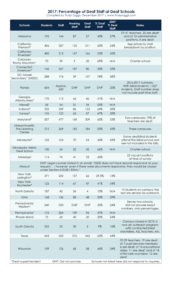
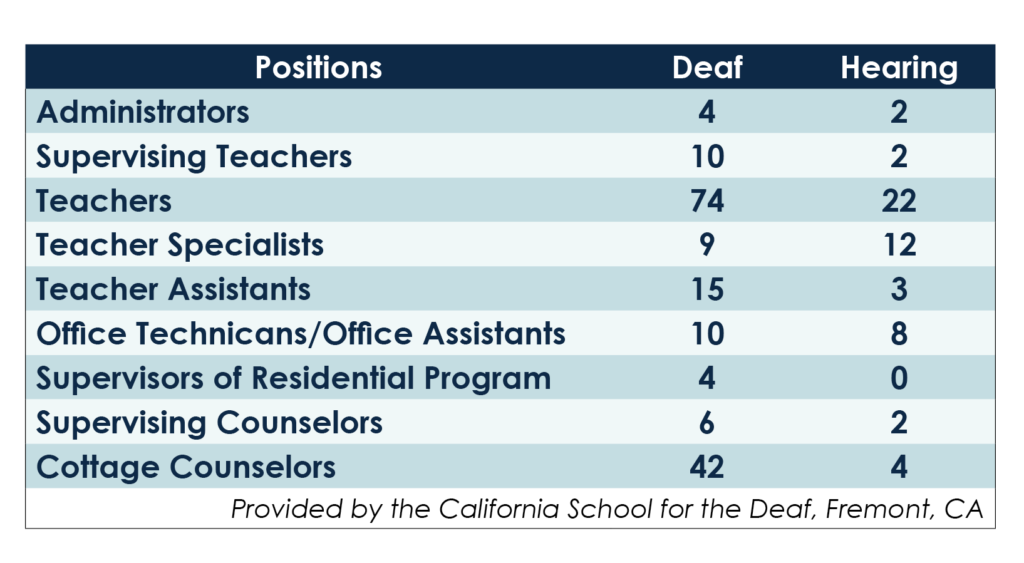
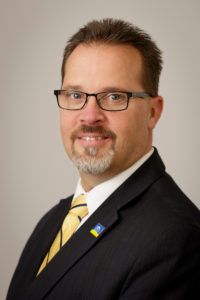
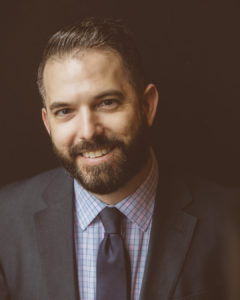

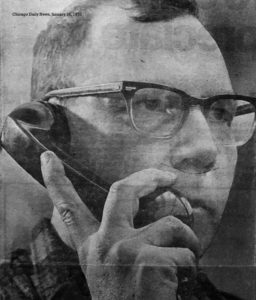
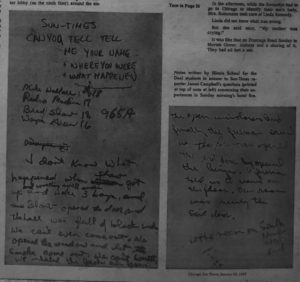
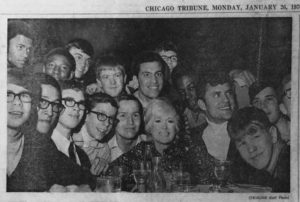
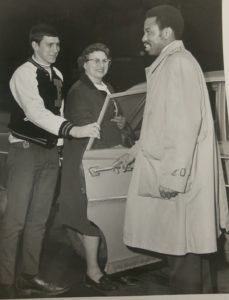
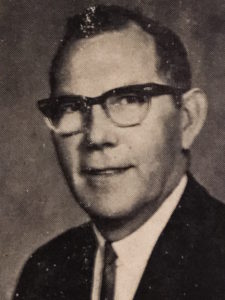
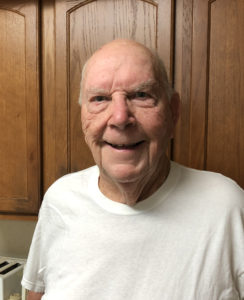
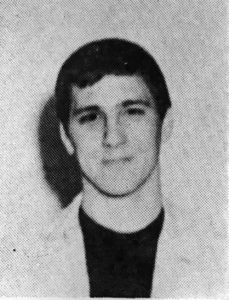
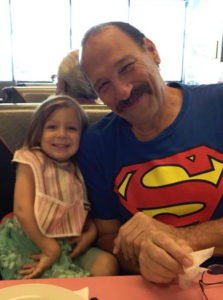
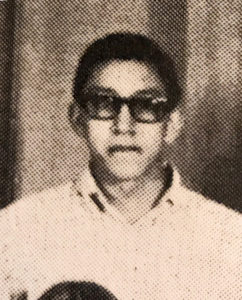
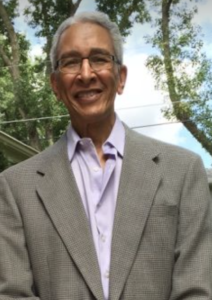

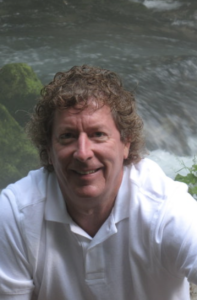 David Reynolds, 63, became an educator and worked for years at the Indiana School for the Deaf before moving west to Fremont, Calif. He has three sons, and has an acting career, most notably as Dr. Wonder on
David Reynolds, 63, became an educator and worked for years at the Indiana School for the Deaf before moving west to Fremont, Calif. He has three sons, and has an acting career, most notably as Dr. Wonder on 